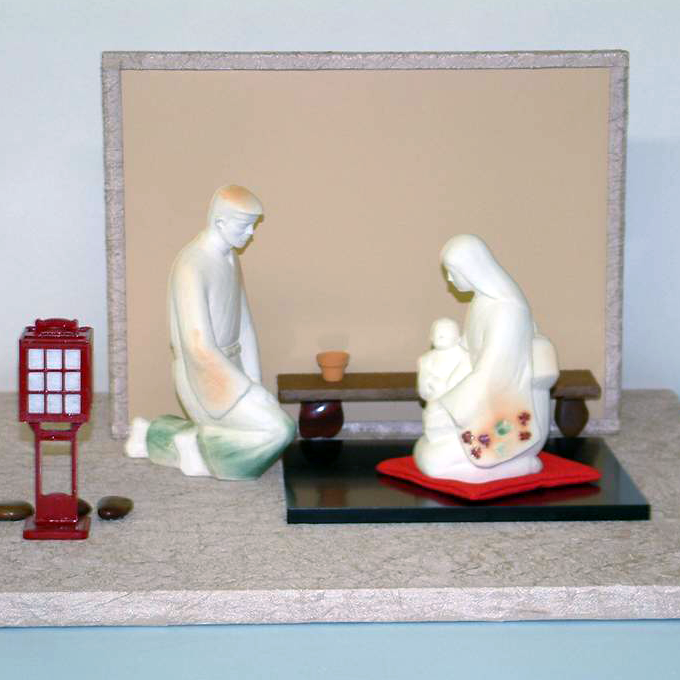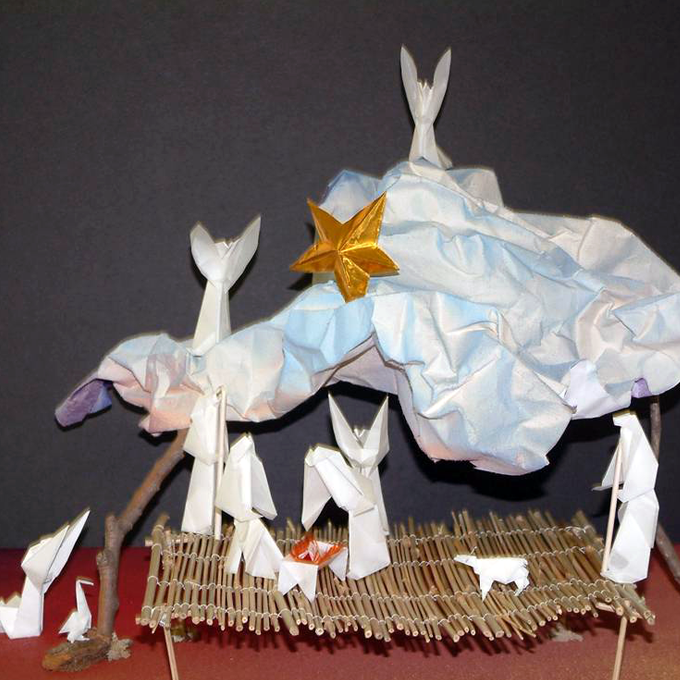Japan
Japan
The following Nativities are each displayed in a unique permanent setting created by Marian Library Crèche Collection volunteers. The descriptive text for each was written by Father Johann Roten, S.M.

Humble Beauty
Itari Akayama
Japanese culture is a culture of simplicity and balance. It imitates the harmony of nature, its silent grandeur and graceful simplicity. Imitating nature is like imitating the art of God. This may be the reason why everything in Japanese culture, from gardening to martial arts, is permeated with awe and reverence, reflecting the age-old wisdom that nature is not governed except by obeying her. Similarly, this artless bisque nativity, placed in a setting of austere beauty is a welcome reminder of the Japanese philosophy of “moral geometry.” Things spiritual and supernatural are too great and difficult for human understanding, but they may be expressed in humble awe with words and deeds of simple beauty.
– ML.1118.10

Worship of the Imperfect
Unknown artist
Known as Origami, the art of making various shapes and forms with paper is first mentioned in the fourth century A.D. Square and rectangular pieces of paper were cut and folded into symbolic representations of the Spirit of God. Origami is best defined as “folded paper” and “paper folding.” As early as the twelfth century, folded paper came to be used for certificates which accompanied valued objects, such as swords. Certificates were folded in two to highlight their value. In the eighteenth century, Origami took on a new meaning, that of “formal wrappers” or tsutsumi. There is also the well-known custom of Senbazuru or of the “thousand paper cranes.” Who manages to make one thousand paper cranes will see his dearest wish come true. Origami is a tribute to the skilled hands of the Japanese people, but it has also a symbolic meaning. It is sometimes described as “moral geometry,” because it defines our sense of proportion to the universe. On the other hand, Origami may also be called “worship of the imperfect.” It is a tender attempt to accomplish something possible in a world of impossibles. Didn’t Jesus Christ try to do the same?
– ML.1118.03
